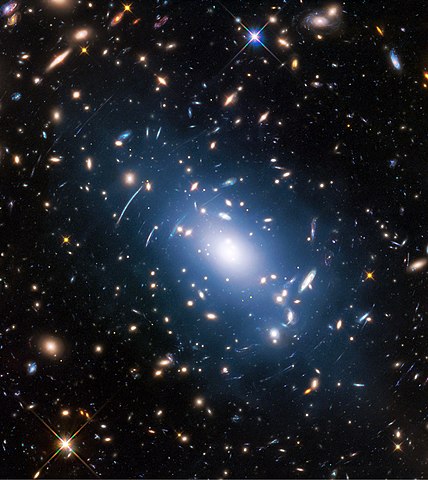Dark Energy & Dark Matter
The observed accelerated expansion of the Universe is caused by so-called Dark Energy. Even though almost 70 percent of the total energy content of the Universe seems to be in the form of this Dark Energy, it is one of the biggest mysteries in cosmology.
Dark matter is a form of matter thought to account for approximately 85% of the matter in the universe and about a quarter of its total energy density.
The presence of both Dark Energy and Dark Matter is implied in a variety of astrophysical observations, including gravitational effects that cannot be explained by accepted theories of gravity unless more matter is present than can be seen.
Dark matter is a form of matter thought to account for approximately 85% of the matter in the universe and about a quarter of its total energy density.
The presence of both Dark Energy and Dark Matter is implied in a variety of astrophysical observations, including gravitational effects that cannot be explained by accepted theories of gravity unless more matter is present than can be seen.

Abell S1063, a galaxy cluster, was observed by the NASA/ESA Hubble Space Telescope as part of the Frontier Fields programme. The huge mass of the cluster — containing both baryonic matter and dark matter — acts as cosmic magnification glass and deforms objects behind it. In the past astronomers used this gravitational lensing effect to calculate the distribution of dark matter in galaxy clusters. A more accurate and faster way, however, is to study the intracluster light (visible in blue), which follows the distribution of dark matter. Credit: ESA/Hubble
International Collaboration
Buffalo